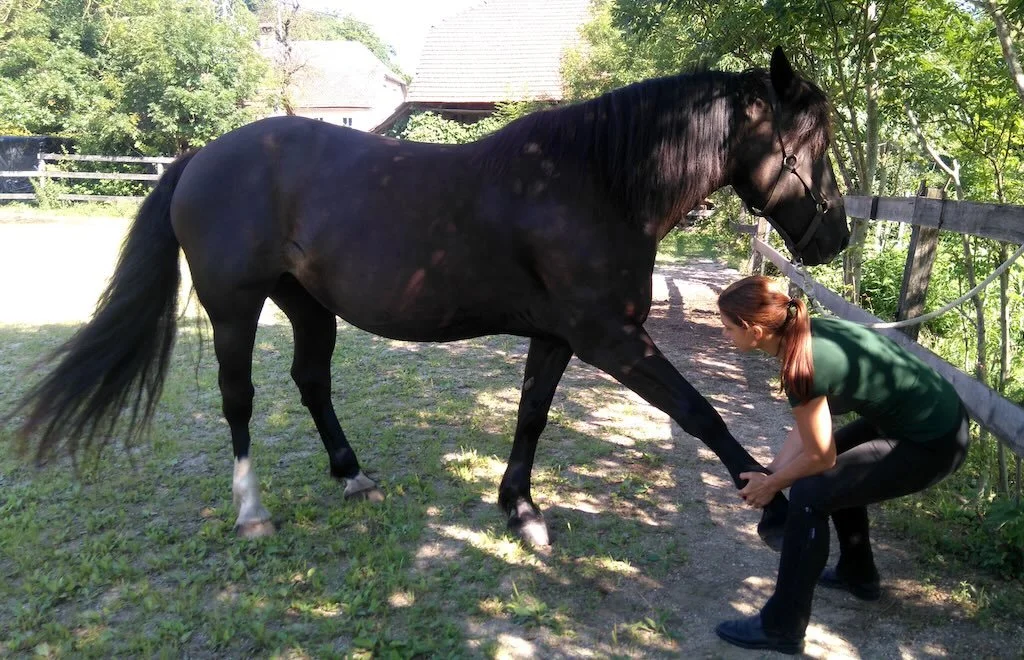Making sense of subtle front limb issues
Why a horse might appear off in front is sometimes a very difficult question to answer. Here are some tips on how to go about your detective work.
If protraction is limited, this could indicate a restriction in the retraction line, and vice versa.
Very often, a rider will describe the horse as being off in the front end, but they will struggle to really put the finger on exactly what the problem is. The issue might only appear in certain situations (for example, on small circles or on certain footing), or it might come and go intermittently. Here are some things to keep in mind when playing detectives with front end issues.
Movement is key to solving many performance issues, so it's important to keep in mind how the body (or body part) is built to move and how the movement at hand deviates from that norm. The horse's front leg moves in three main ways – protraction (the leg goes forward), retraction (the leg goes backward), adduction (the leg goes towards the midline) and abduction (the leg goes away from the midline). There's also a degree of external and internal rotation, but for the sake of simplicity, let's not overthink it here. Each of these movements is achieved by a set (or chain) of muscles. It's much easier to think in terms of muscle chains as opposed to individual muscles. The muscle chains or myofascial lines are wonderfully described by Rikke M. Schultz, Tove Due and Vibeke S. Elbrond in their amazing book Equine Myofascial Kinetic Lines. I highly recommend reading it. Several times.
It will come as no surprise that in the front limbs, we have a protraction line, a retraction line, an adduction line and abduction line. They all have to work in synchrony in order to create fluid, elastic movement. If there is a problem with one (or more) of the lines, it will show up in movement. If the protraction line is tight and shortened, this means that the horse's ability to retract will be reduced. Because of this, the horse will have a harder time properly pushing off the leg, which means there will be a deficit in propulsion. On the other hand, if the retraction line is tight, the horse will have a hard time with protraction. This can be observed as a shortened and stiff stride. This problem might be more obvious on a small circle, when the affected limb is on the outside. Issues with adduction and abduction might be a little trickier to spot, but you can see it, if you pay attention. If the adduction line is tense, the horse will keep his legs closer to the body. He might appear as if he is tightrope walking. Because the legs will be pulled tight into the ribcage, the horse's ability to lift the base of the neck might be negatively impacted. Tightness in the abduction line will become more evident in lateral gaits or leg yielding, as the horse will have a harder time crossing over with the front legs.
Obviously, these are not hard-set rules, but some guidelines that might help you determine where an issue is coming from. To make things complicated, in some horses you will see issues with more than one line, or different lines in different legs might be affected. But, you gotta start somewhere and thinking in terms of movement can help you become a better detective.
